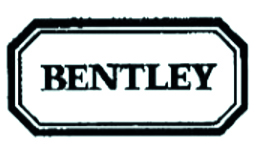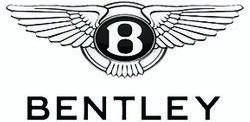Alternative avenues are dead ends
Once again, a David gains a victory, writes Henry Schlaefli. [2020] EWCA Civ 1726, Bentley Motors Ltd v Bentley 1962 Ltd & Others, High Court, 16th December 2020.

The first instance decision, Bentley 1962 Ltd & Brandlogic Ltd v Bentley Motors Ltd1, was widely reported as a David v Goliath-style victory for the smaller companies (collectively, Bentley Clothing). And on closer inspection, Bentley Clothing certainly seemed to have the stronger registered rights.
In this appeal, Bentley Motors tried to exploit some alternative avenues to overturn the first instance findings on double identity. The appeal also provides some interesting commentary on the scope of the historical defences derived from transitional provisions.
Case background
Bentley Clothing was the owner of three earlier trade marks containing the word “Bentley”, covering articles of clothing and headgear, the earliest of which was registered in 1982. Bentley Motors had sold clothing under signs comprising the word “Bentley” since 1987. During this time, there were a number of disputes between the parties, including an unsuccessful non-use revocation action filed by Bentley Motors. In these proceedings, Bentley Clothing alleged trade mark infringement for use of the sign or signs shown opposite since November 2011.
The first important point in the first instance decision was whether Bentley Motors used one sign or two separate signs, with reference to the “B-in-Wings” device and the BENTLEY word mark. This distinction was crucial in determining whether or not there was infringement under Article 5(1)(a) Directive 2008/95 (double identity). At first

instance, His Honour Judge Hacon concluded that there were two separate signs, so Bentley Motors had used the identical word mark BENTLEY. Of key importance to his conclusion was the fact that the marks had been used separately prior to 2011 and for a long period of time, meaning it was likely that consumers would have viewed the signs in combination as two familiar signs being used together.
Another point of paramount importance was whether – if double identity and therefore infringement under Article 5(1)(a) were indeed found – a defence of honest concurrent use was available. This defence was unsuccessful on first instance. The judge commented that the evidence gave a strong impression that, from 2000, Bentley Motors had a policy of “grandmother’s footsteps” in relation to Bentley Clothing, consciously developing use of the word “Bentley” in relation to its own clothing goods. The sign’s prominence was increased incrementally in an attempt to avoid provoking a reaction from Bentley Clothing. Such use was not honest concurrent use.
One sign or two?
The first ground of appeal was that the judge was incorrect to conclude that Bentley Motors had used two separate signs simultaneously, namely BENTLEY and the “B-in-Wings” device. In particular, the judge was wrong to rely on the conclusion that Bentley

Motors itself had, prior to 2014, regarded them as two separate signs. This ground was dismissed on the basis that there was no error in principle in the way the judge went about his assessment on that point. Moreover, Lord Justice Arnold agreed with the conclusion on first instance.
Infringement
Bentley Motors’ second ground of appeal was that the judge had erred in his finding of infringement under Article 5(1)(a) because he should have considered whether point (vi) had been satisfied.
CJEU case law sets out the conditions required for infringement under Article 5(1)(a) Directive 2008/95. These are: (i) there must be use of a sign by a third party within the relevant territory; (ii) use must be in the course of trade; (iii) use must be without consent of the proprietor; (iv) the use must be of a sign which is identical to the trade mark; (v) the use must be in relation to goods or services which are identical to those of which the trade mark is registered; and (vi) the use must affect, or be liable to affect, one of the functions of the trade mark.
Lord Justice Arnold commented that the burden of proof regarding point (vi) is an important point that should be referred to the CJEU. After referencing Supreme Petfoods Ltd v Henry Bell & Co. (Grantham) Ltd2, he set out his preferred view, which was: “Once the trade mark owner shows that condition (v) use in relation to goods or services… is satisfied, then the defendant bears the onus that such use does not affect, nor is liable to affect, any of the functions of the trade mark.” However, he noted that there are other possible interpretations and this has not yet been decided by the CJEU.
It’s here that Bentley Motors’ pleadings seem to have caused it difficulty. In its initial pleadings, the CMC and its amended pleadings, Bentley Motors had not denied that if there had been use of an identical sign, then there was infringement under Article 5(1)(a). However, it maintained that there was still a defence of honest concurrent use. Lord Justice Arnold concluded that the only case advanced by Bentley Motors as to why condition (vi) was not satisfied was its claim of honest concurrent use. It was now not open to Bentley Motors to contend that the judge should have found that its use did not affect any of the key functions of a trade mark under point (vi) for some other reason.
Lord Justice Arnold added that even if Bentley Motors’ wider arguments – including that the use did not affect any of the functions of the mark – were accepted, these would not have been successful. The crux of Bentley Motors’ argument was that use of BENTLEY with the “B-in-Wings” device during the relevant period was exclusively associated by the consumer with Bentley Motors, such that the use was not liable to affect any of the functions of the earlier rights. This argument was inconsistent with the findings that led to the rejection of the honest concurrent use defence. Of note was HHJ Hacon’s comment that “Bentley Motors’ policy will have had the intended effect of increasingly arrogating to itself goodwill associated with BENTLEY in the clothing business. This amounts to a steady encroachment on Bentley Clothing’s goodwill.” Such use was therefore highly likely to affect the function of the trade mark.
Previous legislation
The final ground of appeal was in respect of the interpretation of Bentley Motors’ defence under the transitional provisions: schedule 3, paragraph 4 to the Trade Marks Act 1994. At first instance, it was decided that Bentley Motors had a defence under this provision because the goods it sold, “jackets, silk ties, caps and scarves”, were not identical to the “articles of knitted clothing, shirts and waistcoats” in Bentley Clothing’s lozenge registration. The lack of identical goods meant that use on these would not have constituted an infringement under the Trade Marks Act 1938. It was also found that Bentley Motors had a defence regarding its use of the word “Bentley”, but only in respect of “promotional literature” used to advertise its clothing goods. Use on the goods themselves or on swing tags or other items attached to the goods was objectionable.
Bentley Motors amended its defence to argue that it should apply more broadly, for example to items of clothing that were not the “articles of knitted clothing, shirts and waistcoats” contained in Bentley Clothing’s registration, and also that the defence should not be limited to “promotional literature”.
In his decision, Lord Justice Arnold listed a number of potential options for the level of detail at which this provision should apply and commented that there may be more granular approaches. However, he settled on the view that he had no basis for interfering with HHJ Hacon’s interpretation of the defence. In addition, he saw no merit in a broader approach which would, in allowing for Bentley Clothing to prevent use of its mark on a wider set of goods with the introduction of the 1994 Act, at the same time give Bentley Motors the ability to use the BENTLEY mark on goods that it had not used it on before, with no avenue for Bentley Clothing to object.
1 [2019] EWHC 2925 (Ch)
2 [2015] EWHC 256 (Ch)
Key points
- Rights under Article 5(1)(a) Directive 2008/95 are often powerful, as likelihood of confusion is generally assumed
- In such cases, it may be possible to argue that use does not affect any of the functions of the earlier rights. Although linked, this line of argument is distinct from the honest concurrent use defence
- The transitional provisions in the Trade Marks Act 1994 exist to allow the continued use of signs as the law changes, while ensuring that proprietors and users of marks are not unfairly disadvantaged
Henry Schlaefli is a Chartered Trade Mark Attorney at Boult Wade Tennant LLP
Read the magazine





